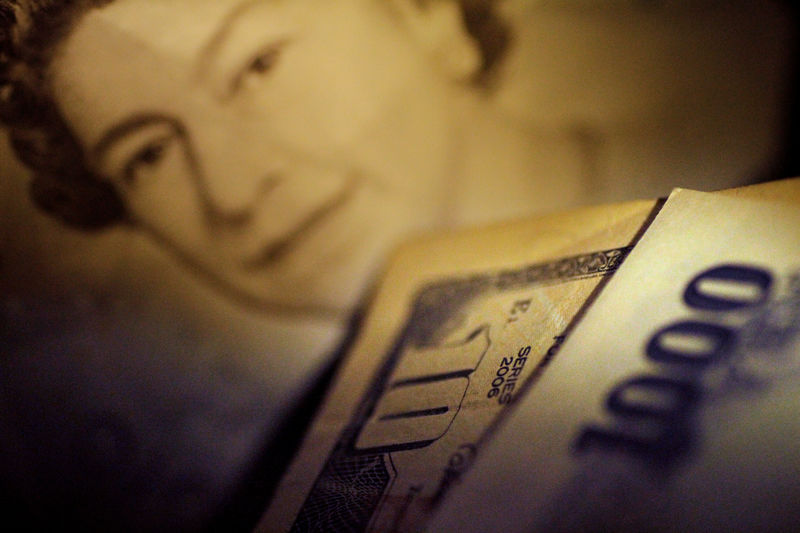By Wayne Cole and Swati Pandey
SYDNEY (Reuters) - The dollar remained on the defensive against the safe-haven yen on Monday as the Sino-U.S. trade dispute looked set to drag on with no settlement in sight, while holidays in Japan and Singapore made for very thin trading.
Confusion still lingered after U.S. President Donald Trump on Friday said he was not ready to make a deal with China and even called a September round of trade talks into question.
Goldman Sachs (NYSE:GS) over the weekend cut its forecast for U.S. economic growth, warning that a trade deal was unlikely before the 2020 presidential election and that the risks of a recession were increasing.
"Overall, we have increased our estimate of the growth impact of the trade war," the bank said in a note.
National Australia Bank downgraded its estimates for a range of major currencies as it now expects "nothing positive will happen" on the trade front at least through early 2020.
It expects the greenback to broadly hold firm in the face of policy easings by other major central banks while Aussie , kiwi and euro (EUR=) are seen on a slippery slope.
On Monday, the dollar was a shade weaker at 7.0925 yuan in offshore trade after the Chinese central bank's daily fixing came in firmer than market expectations.
That helped allay some fears that Beijing would use its currency as a weapon in its trade war with the United States.
A week ago, China let its currency slip to weaker than 7 to the dollar for the first time since 2008, which some saw as an offset to U.S. tariffs. The change pressured emerging market currencies across Asia and boosted the yen.
All eyes will be on Chinese figures on July retail sales and industrial output due Wednesday to gauge the impact of the long-running tussle with the United States on domestic activity.
Market attention will also be on the U.S. Federal Reserve annual symposium at Jackson Hole later in the week, where investors hope to get some clarity on the future path of interest rates. Markets are expecting nearly 100 basis points of cut from the Fed by next year.
The greenback eased against the yen to 105.40 to stay near a seven-month low of 105.25 hit on Friday. The dollar was hardly alone, with the euro down at 118.16 yen (EURJPY=) and near its lowest since April 2017.
Likewise, sterling had sunk to depths not visited since 2016 at 126.69 yen (GBPJPY=) having shed over eight yen in little more than two weeks.
The pound struck a two-year trough on the dollar on Friday after data showed the UK economy unexpectedly contracted in the second quarter, only adding to the bearishness over Brexit and the chance of a no-deal exit.
Sterling was last at $1.2020 and eyeing support at $1.1979, which marks a low from January 2017.
The Telegraph reported Labour MPs had been told to cancel all travel in early September in anticipation of Jeremy Corbyn tabling a motion of no confidence in the government.
The euro was a shade firmer on the dollar at $1.1207 (EUR=), bound between resistance at $1.1249 and support at $1.1175.
Politics remained a drag with the prospect of snap elections in Italy up in the air as opposition built to League chief Matteo Salvini's plans for a vote.

Another hurdle will be Germany's gross domestic product figures on Wednesday where a contraction is a real risk given a steep drop in factory output in June.